Introduction
The packaging industry is always evolving and innovations are paving the way to increase quality, preserve freshness, and enhance the consumer experience. In the meantime, two types of “smart” and “active” packaging have received increasing attention. In the previous articles compiled by the Vira team, we talked about smart and active packaging in detail. Both types of packaging offer unique advantages, but there are also subtle differences between them that are important to understand to make the right choice according to their applications in different industries.
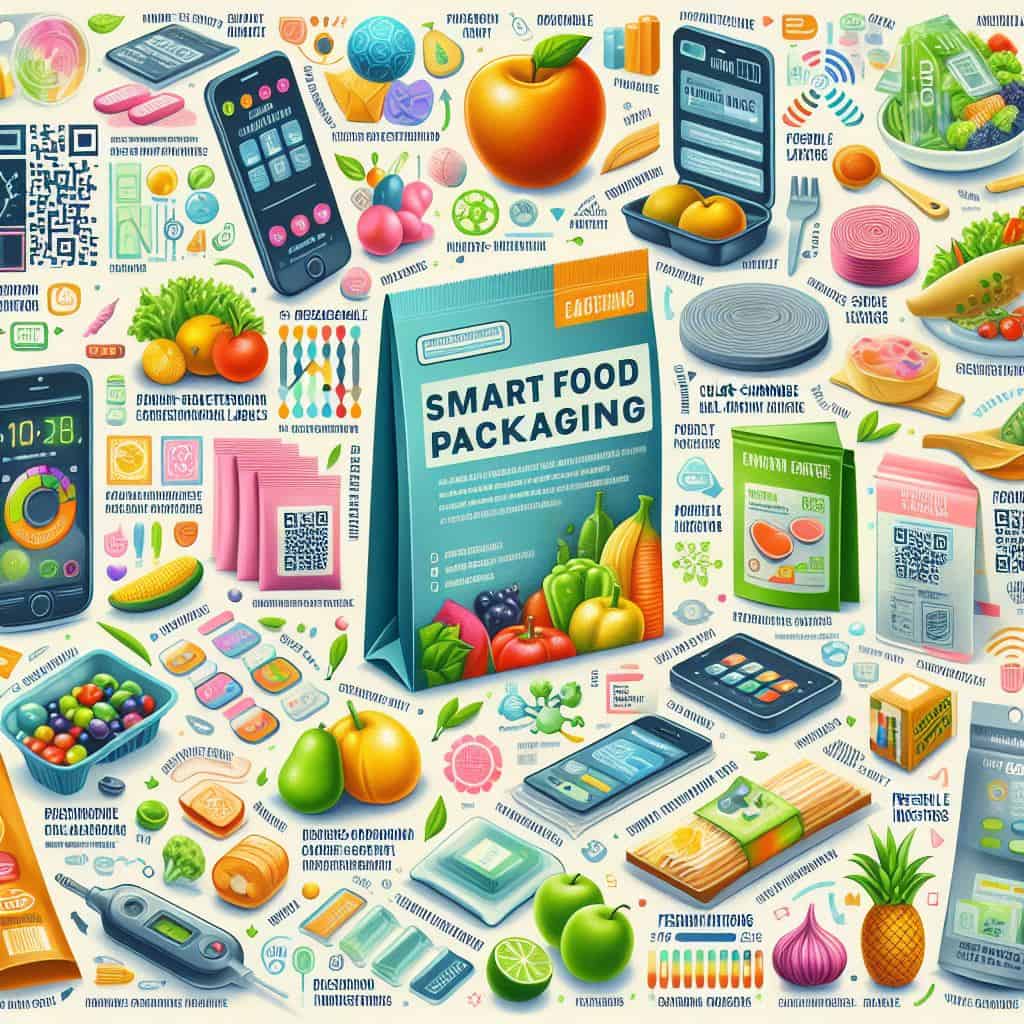
What is smart packaging?
Smart packaging is a type of packaging that uses new technologies to collect, store, and transmit information about the product, environmental conditions, and the distribution process. This information can include the following:
- Expiration date
- Product quality
- Temperature conditions
- humidity
- Shock and vibration
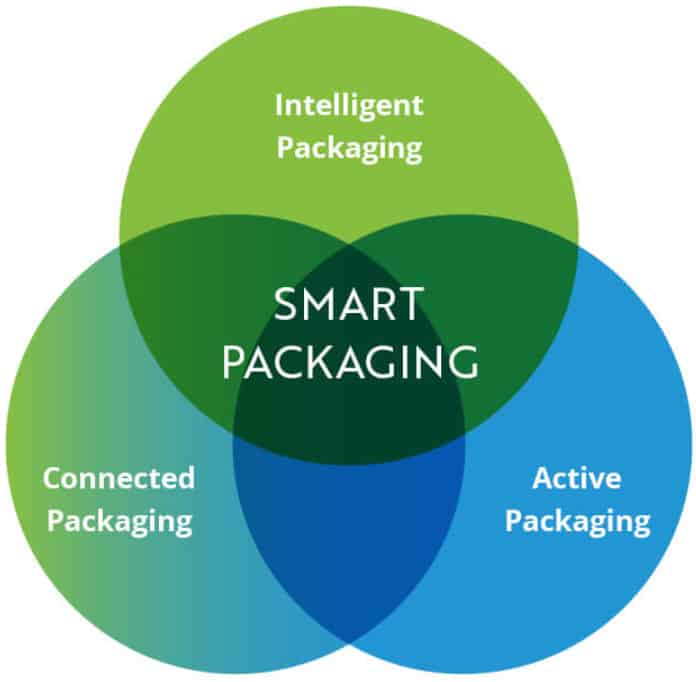
Advantages of smart packaging:
- Product tracking and tracing: It can help track and trace the product throughout the supply chain and prevent loss, theft, or fraud.
- Quality control: By monitoring environmental conditions and product quality, smart packaging can help ensure the quality and freshness of the product from the time of production to the time of consumption.
- Reduce waste: By providing accurate information about product expiration dates and quality, smart packaging can help reduce food waste.
- Enhancing consumer experience: It can enhance consumer experience by providing useful and engaging information.
Types of smart packaging:
- RFID tags: These tags use radio waves to identify and track products.
- Sensors: Sensors can be used to measure temperature, humidity, shock, and other environmental parameters that are biological, chemical, or electronic.
- Digital displays: These displays can show the consumer information about the product, such as expiration date and quality.
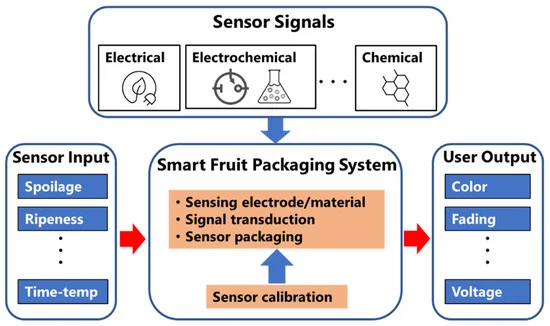
What is active packaging?
Active packaging is a type of packaging that actively interacts with the product or its surrounding environment to increase its quality and shelf life. This type of packaging of different materials and systems is used for the following:
- Oxygen absorption
- Humidity control
- Ethylene absorption
- Release of antimicrobial substances
- Setting the atmosphere inside the package
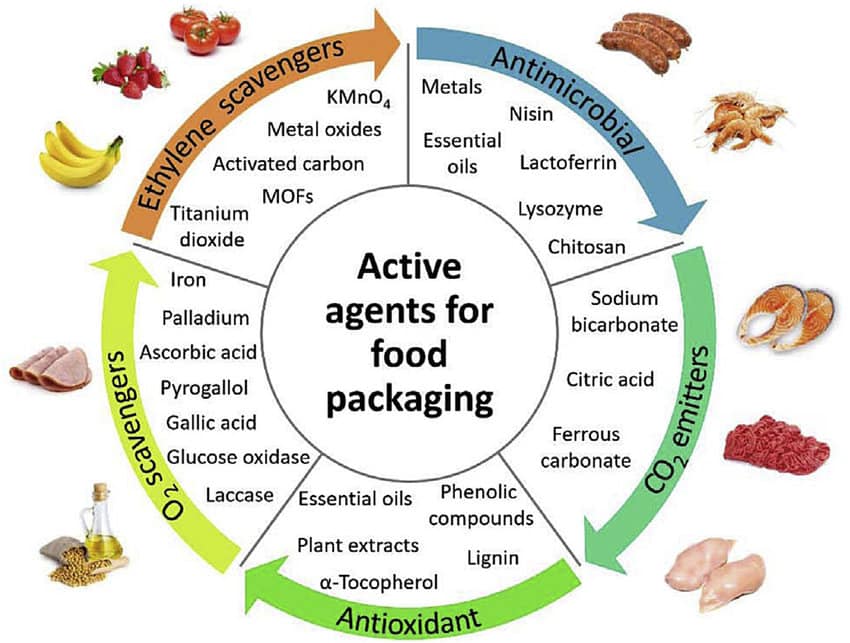
Advantages of active packaging:
- Increasing product shelf life: Active packaging can significantly increase product shelf life by controlling spoilage factors.
- Preservation of product quality: It can preserve the quality of the product until the time of consumption by preserving the taste, color, and smell.
- Reducing food waste: By increasing shelf life and maintaining product quality, active packaging can help reduce food waste.
- Increased food safety: Active packaging can increase food safety by preventing the growth of microbes and bacteria.
Types of active packaging:
- Oxygen absorbers: these materials absorb oxygen inside the packaging and help preserve the taste and color of the product.
- Moisture absorbent: These materials absorb excess moisture inside the package and prevent mold and spoilage of the product.
- Antimicrobials: These materials prevent the growth of microbes and bacteria inside the package.
Key differences between smart and active packaging:
| Property | Smart packaging | Active packaging |
|---|---|---|
| Function | Collection, storage and transfer of information | Interaction with the product and the surrounding environment |
| Target | Product tracking and tracing, quality control and improving the consumer experience | Increasing shelf life, maintaining quality and increasing safety |
| Technology | RFID tags, sensors, and digital displays | Absorbents, antimicrobials and atmosphere regulation |
Choose between smart and active packaging:
The choice between smart and active packaging depends on the specific needs of the product and its supply chain.
Points to consider:
- Product Type: Some products, such as perishable foods, require active packaging to increase shelf life and maintain quality. Other products, such as pharmaceutical products, may require smart packaging for tracking and tracing in the supply chain.
- Cost: Active packaging is generally more expensive than smart packaging.
- Supply chain: The complexity of the supply chain can affect the type of packaging needed, which can be used to improve the transportation system and the supply chain.
- Consumer needs: Some consumers may be interested in the information provided by smart packaging while others may seek active packaging to increase shelf life and maintain product quality.
Examples of smart and active packaging applications:
- Active packaging for food:
Oxygen absorbers are used to preserve the flavor and color of meat, moisture absorbers are used to prevent bread from becoming moldy, and antimicrobials are used to increase food safety.
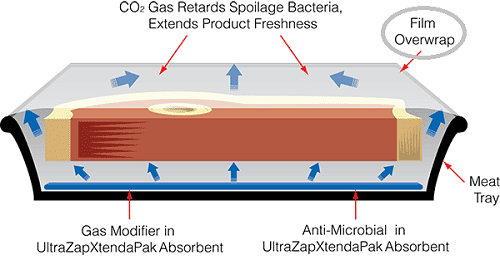
- Active packaging to increase the shelf life of agricultural products:
Active packaging by adjusting the atmosphere inside the package can help maintain the quality and increase the shelf life of agricultural products such as fruits and vegetables.
Example: The company “Nature’s Pride” uses this modified atmosphere technology to increase the shelf life of strawberries. By reducing the amount of oxygen and increasing the carbon dioxide inside the packaging, this packaging helps preserve the taste and color of strawberries and prevent them from spoiling. - Active packaging to increase food safety:
Active packaging using antimicrobials and nanoparticles can help increase food safety and prevent the growth of microbes and bacteria.
Example: PepsiCo uses silver nanoparticle technology to increase the safety of its potato chips. These nanoparticles destroy harmful bacteria and help maintain the quality and freshness of the chips. - Active packaging for cosmetic products:
Oxygen absorbers are used to preserve the quality of creams and lotions, and antimicrobials are used to prevent bacterial growth. -
Smart packaging for food:
RFID tags are used to track and trace products in the supply chain, and sensors are used to monitor temperature and humidity inside the package.
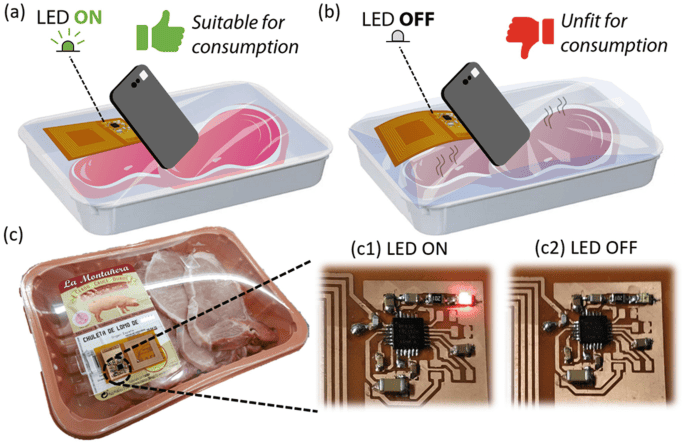
-
Smart packaging to enhance the consumer experience:
Smart packaging can enhance the experience of consumers by providing useful and attractive information.
Example: “Nestlé” company uses this technology to provide consumers with information about expiration dates, recipes and nutritional information of its products. This information helps consumers make the most of their produce and avoid food waste.
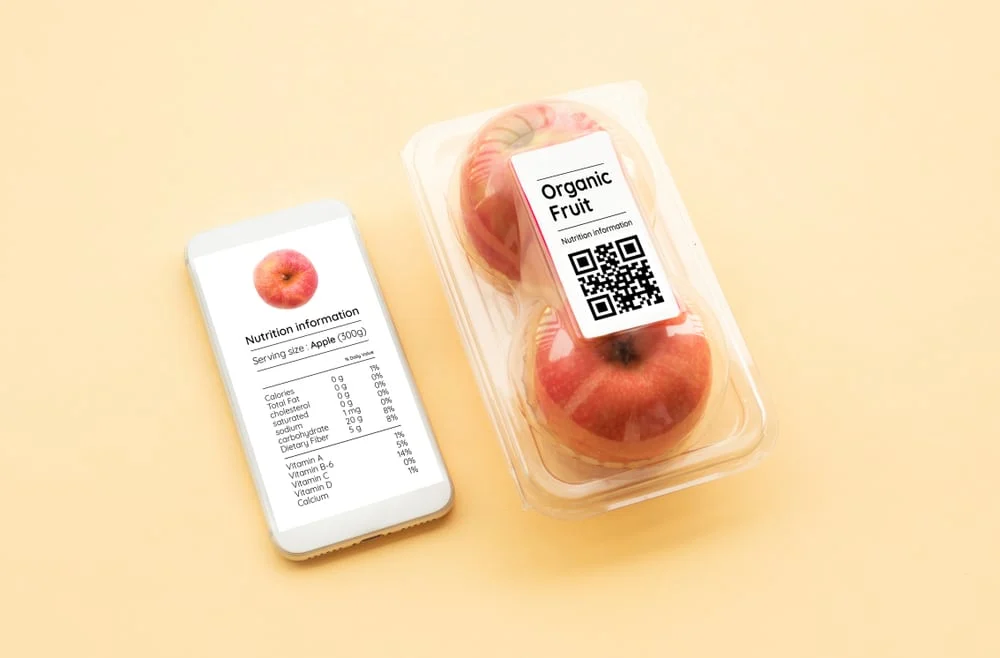
-
Smart packaging for health monitoring:
Smart packaging can be used to monitor the health of elderly or sick people.
Example: “SmartPill” company uses this technology to monitor drug consumption by elderly people. This package is equipped with sensors that remind the patient when to take the medicine and provide the doctors and caregivers with information about the medicine. -
Smart packaging for pharmaceutical products:
RFID tags are used to track and trace drugs in the supply chain, and sensors are used to monitor the temperature of drugs.

Challenges facing smart and active packaging:
- Cost: Smart and active packaging are generally more expensive than traditional packaging, but they are significantly more efficient.
- Infrastructure: The implementation and use of these packages require appropriate infrastructure such as wireless networks and data analysis systems.
- Environmental considerations: Some of the materials used in these packaging technologies may be harmful to the environment, but this is not the case with biosensors.
Conclusion:
Smart and active packaging are two new technologies that have great potential to improve quality, preserve freshness, increase safety, and improve consumer experience. Despite the challenges facing these technologies, technological advances and increased demand for quality and safe products will help the industry grow and develop in the future. In the end, if you want to learn more about Vira smart labels, which is the first smart packaging for food and medicine in Iran, click on its link!

